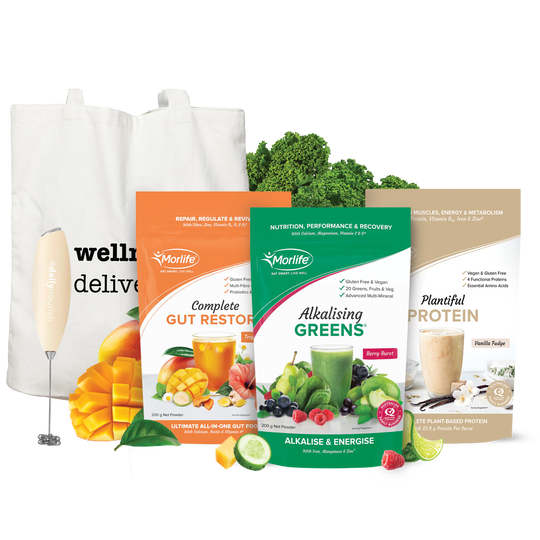Simple ways to nourish your little ones

Providing your child with the right nutrients can be hard, even more so when you’ve got a picky eater.
Picture this: You’ve lovingly crafted the perfect, nutritionally balanced meal for your child. Spaghetti Bolognese - a unanimous favourite - is on the menu, loaded with a careful selection of grated vegetables, wholegrain pasta and garnished with a little cheese on top. As you present the dish you rejoice at the wonderful job you’ve done, ticking all the boxes on the nutrition checklist. They accept the bowl, but merely pick at the pasta and nibble cheese, before pushing it away with the declaration, “I’m full.” Welcome to the dinner time standoff.
Children are prone to taste neophobia, the fear of trying new flavours. Parents, out of their own fear of starving, grumpy children, pander to their little neophobes, offering familiar bland foods like plain pasta, rice and bread that have a good chance of being eaten. Unfortunately, bland foods are typically rather bland on the nutrition front too, lacking the protein, healthy fats, vitamins and minerals that growing bodies and brains need. Thus, munching on bread and plain pasta may leave a child feeling full, but leaves their little body hungry for nourishment.
Ensuring adequate nutrition for children is a battle most parents are losing. Less than 1 per cent of Australian children aged 2-3 years consume the recommended serves of vegetables and only 78 per cent eat enough fruit; while 4-8 year olds eat just one-third and two-thirds of their vegetable and fruit requirements, respectively.

As parents, we cannot underestimate the benefits that adequate childhood nutrition will have on wellbeing throughout life. Apart from their substantial vitamin and mineral content, fruits and vegetables provide valuable phytochemicals and antioxidants that reduce inflammation, decrease oxidative stress and improve immune function. Fruits and vegetables also build stronger bones due to their high levels of minerals, potassium, magnesium and calcium. When consumed over a lifetime, they prevent the risk of a plethora of diseases including obesity, cardiovascular disease, osteoporosis and dementia. Research shows that good nutrition starts at home and that healthy habits instilled during early childhood persist into adolescence and adulthood. It is never too late to start.
The good news is that parents have a secret weapon to help them win the battle and ensure that when children eat they are nourished. Morlife Greens Kidz, Clever Kidz and Immune Kidz are nutrient-dense wholefood greens, chocolate and tropical formulas that fuel their growing bodies, brains & immune systems and are nutritional insurance for parents of picky eaters.
Here are some simple ways to get more nourishment into children:
- Put fruit and vegetables in a bowl where children can see and reach it
- Fortify juice, smoothies and milk with wholefood supplements; or add them to yoghurt and cereal
- Chop soft fruits into fun shapes with cookie cutters
- Store carrot and celery sticks in easily accessible containers in the fridge
- Hide powdered or grated vegetables in food, such as powdered kale in sweet or savoury muffins
- Swap plain pasta for wholegrain or pulse pasta found in the supermarket
- Lead by example – fill your pantry with healthy foods and enjoy them as a family
- Swap crackers or biscuits for vegetables sticks and hummus












